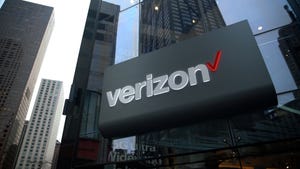Redefining Broadband Could Vex Carriers
Too much too soon, says Broadbandtrends analyst Teresa Mastrangelo.

A newly proposed revision of the Federal Communications Commission (FCC) definition of broadband could spell difficulties for service providers, says an analyst.
FCC Chairman Tom Wheeler last week proposed changing the definition of broadband connectivity to 25 Mbit/s downstream, 3 Mbit/s upstream. The definition is currently 4/1. (See FCC's Wheeler Proposes Raising Broadband Definition to 25 Mbit/s.)
According to an FCC fact sheet on the proposal emailed to Light Reading and other media:
The FCC set its current benchmark of 4/1 over four years ago. That dated standard is inadequate for evaluating whether broadband capable of supporting today's high-quality voice, data, graphics, and video is being deployed to all Americans in a timely way.
Some 53% of rural Americans lack 25/3 access, and 17% of all Americans, or 55 million people, can't connect at 25/3, the fact sheet says, concluding, "broadband is not being deployed to all Americans in a reasonable and timely fashion."
But service providers would have trouble keeping up with the new definition, says Broadbandtrends principal analyst Teresa Mastrangelo.
"Where I see the issue is in the upstream," she says. Most service providers will struggle to achieve 3 Mbit/s upstream throughput.
25 Mbit/s downstream is also problematic, Mastrangelo says. While service providers can provide that bandwidth, they can't do it as part of the base product.
The higher performance threshold would likely require service providers to raise prices, Mastrangelo says. Not everyone wants that level of broadband performance, and consumers will be unhappy if it results in a price increase.
"My Mom and Dad don't stream television. They don't care about broadband," she says. 5-10 Mbit/s is fine for them. "If they get a 25% increase in their price, they wouldn't be very happy with that."
The impact on service providers will depend on the timeframe for the new definition, Mastrangelo says. "You're looking at a significant jump from 4 megabits to 25. I don't think there should be expectations that the operators will meet this baseline in a year. They'll need more time."
Find out more about broadband on Light Reading's broadband channel.
A 10 Mbit/s downstream threshold would be more practical, realistic, and achievable in a short timeframe. "25 is a bit of a jump," Mastrangelo says.
And it will make a big difference to carriers whether the new speed guidelines are a mandate -- a service that carriers are required to provide -- or simply a definition for research purposes, Mastrangelo says.
Even if the FCC doesn't make 25 Mbit/s a requirement for all services providers, the new speed threshold could affect eligibility for Connect America, a $100 million FCC-run program to fund service providers providing rural broadband. It won't affect the current round, launched over the summer, but it would likely affect future rounds; service providers would be required to commit to the higher speed to receive funding, she says. (See FCC Announces Connect America II Funding.)
— Mitch Wagner, 


 , West Coast Bureau Chief, Light Reading. Got a tip about SDN or NFV? Send it to [email protected].
, West Coast Bureau Chief, Light Reading. Got a tip about SDN or NFV? Send it to [email protected].
About the Author(s)
You May Also Like












